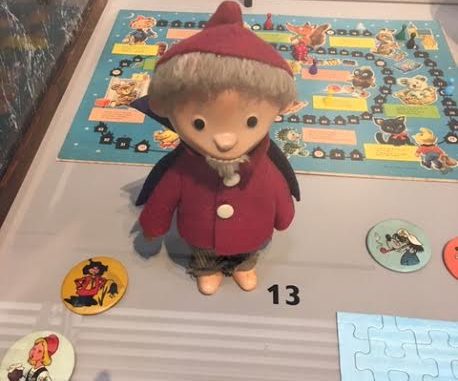
The Wende Museum is housed on Culver Boulevard in a building that was once the National Guard Armory, an irony that Executive Director Justin Jampol feels very good about. “This very building was once the center of an American culture that was preparing for what might have been World War Three. Now it’s a collection of artifacts from what used to be communist Europe, being used to teach about change and peace.”
The new exhibits scheduled to open at the Wende this Sunday, June 23, 2019, are revolutionary and educational, and fun in many ways. The larger exhibit, Watching Socialism; The Television Revolution in Eastern Europe, is a seven part look at both the artifacts and the broadcasts of East Germany, Romania, Yugolslavia and greater Europe as television became a part of culture in the 20th century.
From the VL100 model of tv set, named in honor of the 100th anniversary of the birth of Vladimir Lenin to the Japanese manufactured Sharp model, Soviet sets were somewhat different from those sold in the western world, but with the same status as consumer goods that elevated furniture to the source of conversation. Where there was a tv set, there was the center of the house.
The programming had a number of similarities; children’s cartoons, domestic dramas and news. While most often is was western programming that was a draw for socialist audiences, it was not always a one-way street. A popular children’s program called “Sandmann” was created in East Germany, and was enjoyed by kids all over Europe. (See photo above from exhibit, and the video clip below) A replica production from West Germany did not achieve the same level of fandom, and was eventually dropped.
The takeover of television stations were critical to the toppling of states in both Romania and Russia, and the broadcast of the Romanian uprising is there to view, soundtrack available on headphones.
While the Wende has done a splendid job of curating “Watching Socialism,” the exhibit “Nonalignment and Tito in Africa” is a traveling portion of a larger exhibit from the National Museum of Yugoslavia.
Yugoslavian President Josip Tito’s visit to Ethiopia to connect with Emperor Haile Selassie in 1961 was a part of the Nonalignment Movement, a political step toward practicing socialism in a non-Soviet way.
Tito had moved Yugoslavia away from Soviet alliance in 1948, and sought to open the political dialogue with African countries like Ethiopia, creating trade agreements and educational exchanges to strengthen the relationship.
Both exhibits will be open at the Wende from June 23 until October 30, 2019.
Judith Martin-Straw


Be the first to comment